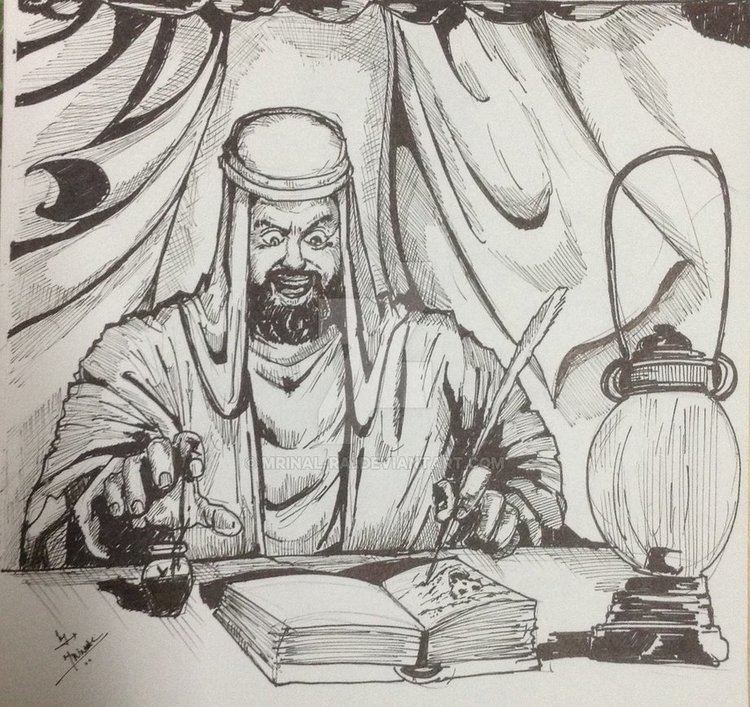

But Shrewbury proceeded in entering the chamber and opening the sarcophagus. The entrance to the chamber warned against disturbing him. Then they blinded him and severed his tongue, and finally executed him. As punishment for his betrayal of their secrets, Alhazred was tortured. Alhazred was kidnapped in Damascus and brought to the Nameless City, where he had earlier studied and learned some of the Necronomicon's secrets. He indeed found the gate of Alhazred's burial chamber and learned of his fate. Shrewsbury, as an old agent of Hastur and devoted enemy of his half-brother Cthulhu, crossed its gates in search of Alhazred's burial site.

At the center of the area they discovered the Nameless City, a domain of Hastur. It may be a reference to the "Rubʿ al Khali", or "The Empty Quarter", the vast southern portion of the Arabian Desert. There, Shrewsbury and Colum found the unexplored desert area the Necronomicon names as " Roba el Ehaliyeh," or " Roba el Khaliyeh" - perhaps a form of "Rabia al-Awliya" (which, again, is not proper Arabic, but could be an allusion to the Sufi Saint Rabia). More specifically, they were heading a caravan from Salalah, Oman, and crossed the border into Yemen. Laban Shrewsbury and his assistant Naylan Colum discovered Alhazred's burial site. August Derleth later made alterations to the biography of Alhazred. He was only an indifferent Moslem, worshipping unknown entities whom he called Yog-Sothoth and Cthulhu.Īccording to another accout, he dead in 731 A.D. He claimed to have seen fabulous Irem, or City of Pillars, and to have found beneath the ruins of a certain nameless desert town the shocking annals and secrets of a race older than mankind. He is said by Ibn Khallikan (13th century biographer) to have been seized by an invisible monster in broad daylight and devoured horribly before a large number of fright-frozen witnesses. Of his final death or disappearance (738 A.D.) many terrible and conflicting things are told. Those who have any dealings with the Necronomicon usually come to an unpleasant end, and Alhazred was no exception.

In 730, while still living in Damascus, Alhazred supposedly authored in Arabic a book of ultimate evil, al Azif, which would later become known as the Necronomicon. In his last years Alhazred dwelt in Damascus. Of this desert many strange and unbelievable marvels are told by those who pretend to have penetrated it. He visited the ruins of Babylon and the subterranean secrets of Memphis and spent ten years alone in the great southern desert of Arabia - the Roba el Khaliyeh or "Empty Space" of the ancients - and "Dahna" or "Crimson" desert of the modern Arabs, which is held to be inhabited by protective evil spirits and monsters of death. mad poet of Sanaá, in Yemen, who is said to have flourished during the period of the Ommiade caliphs, circa 700 A.D. The term "Mad Arab" in reference to Alhazred is always capitalised and used as a title, and the term can actually be used in lieu of Alhazred's name. In Arabic texts, his name has appeared as Abdullah al-Ḥaẓrad (عبدالله الحظرد). The more proper Arabic form might be Abd al-Hazred or simply Abdul Hazred, although these are still anomalous, as Hazred is not one of the 99 Names of God.


 0 kommentar(er)
0 kommentar(er)
